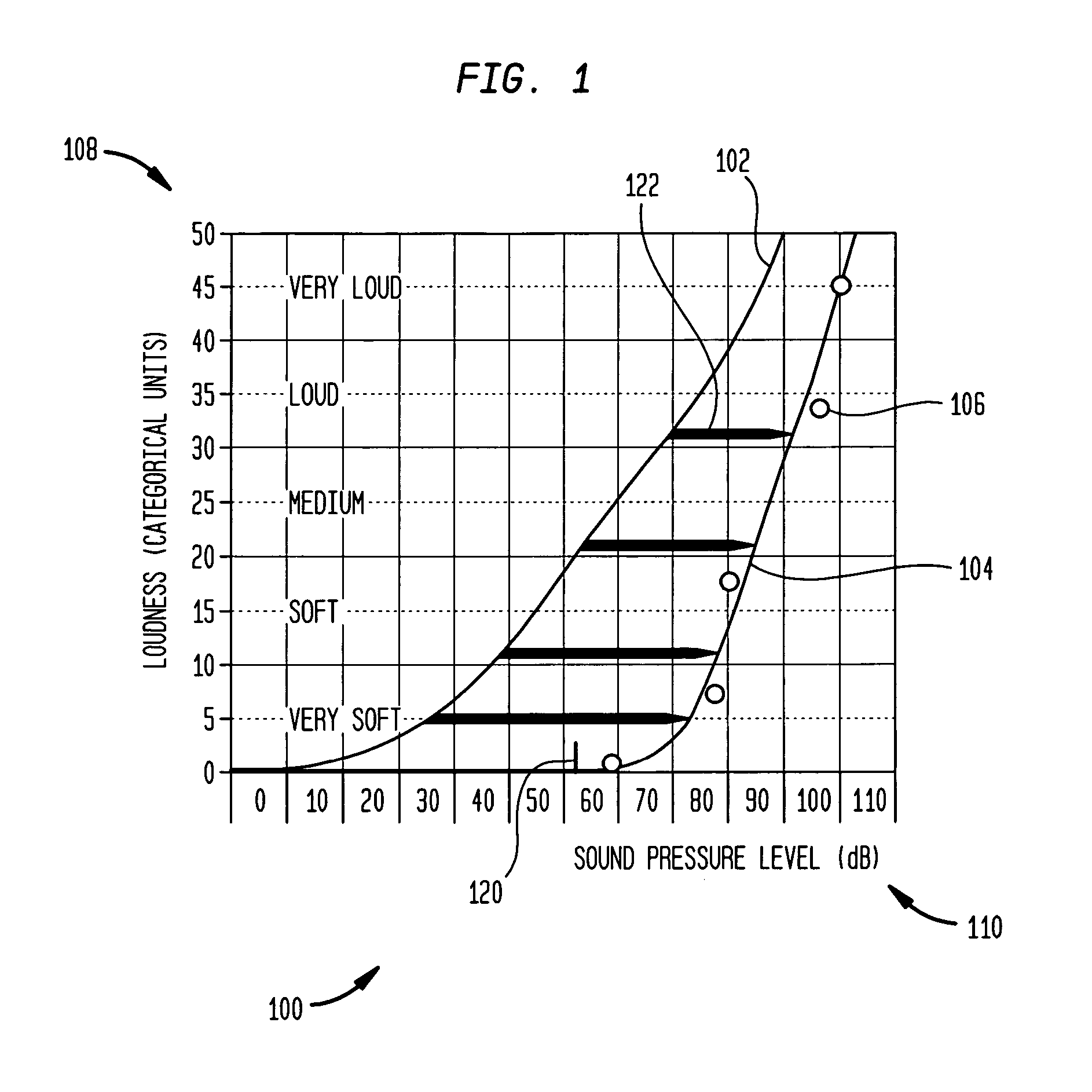Multimodal auditory fitting
- Summary
- Abstract
- Description
- Claims
- Application Information
AI Technical Summary
Benefits of technology
Problems solved by technology
Method used
Image
Examples
example
[0092] The present invention will now be described by way of the following example.
[0093] A 1 kHz Hz 1 / 3 octave noise with the equivalent input level of 70 dB SPL is fed into an electro-acoustic sound processor. The electro-acoustic sound processor has an acoustic mode, hearing instrument, and electrical mode, electrode array. The selected perception model is the ISO 532 (Zwicker model). According to ISO 532 model the input signal should translate into a loudness of 8.8 sones for a normal hearing person. The recipient's response gives 4.9 sone, which is translated into a gain loss of 10 dB according the perception model. To compensate this gain loss, the fitting system increases the gain of the hearing instrument transfer function accordingly. However, the hearing instrument reaches a maximum gain after increasing for 5 dB. Thus, the system starts electrical stimulation in addition and increases the electrical stimulation current until the recipient perceives the signal at a loudne...
PUM
 Login to View More
Login to View More Abstract
Description
Claims
Application Information
 Login to View More
Login to View More - R&D
- Intellectual Property
- Life Sciences
- Materials
- Tech Scout
- Unparalleled Data Quality
- Higher Quality Content
- 60% Fewer Hallucinations
Browse by: Latest US Patents, China's latest patents, Technical Efficacy Thesaurus, Application Domain, Technology Topic, Popular Technical Reports.
© 2025 PatSnap. All rights reserved.Legal|Privacy policy|Modern Slavery Act Transparency Statement|Sitemap|About US| Contact US: help@patsnap.com



